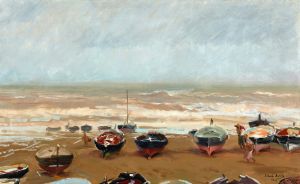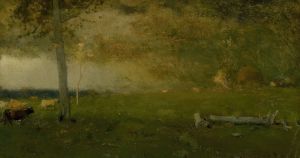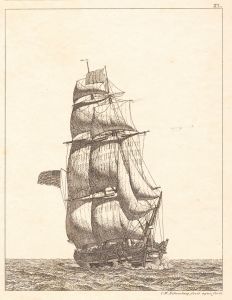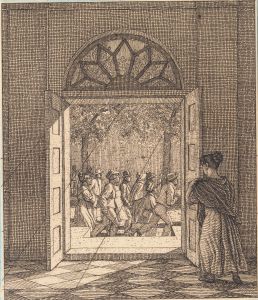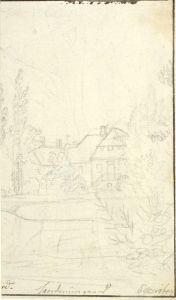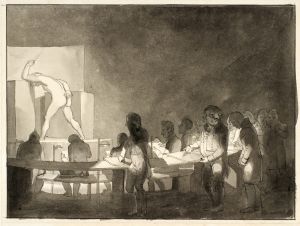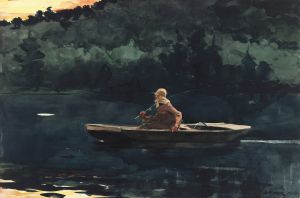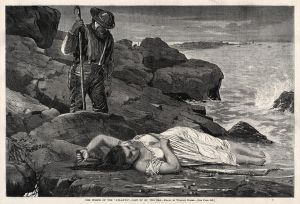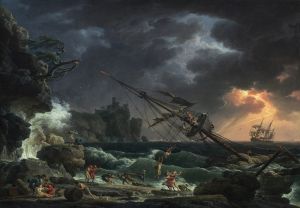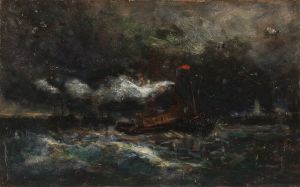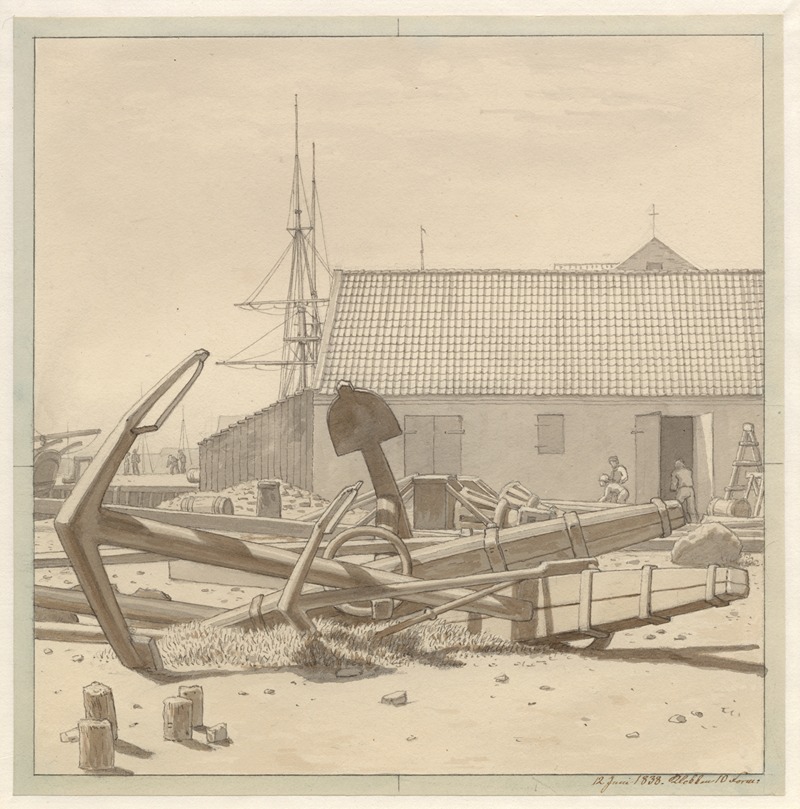
Skibsankre på Larsens Plads
A hand-painted replica of Christoffer Wilhelm Eckersberg’s masterpiece Skibsankre på Larsens Plads, meticulously crafted by professional artists to capture the true essence of the original. Each piece is created with museum-quality canvas and rare mineral pigments, carefully painted by experienced artists with delicate brushstrokes and rich, layered colors to perfectly recreate the texture of the original artwork. Unlike machine-printed reproductions, this hand-painted version brings the painting to life, infused with the artist’s emotions and skill in every stroke. Whether for personal collection or home decoration, it instantly elevates the artistic atmosphere of any space.
"Skibsankre på Larsens Plads" (Ships Anchored at Larsens Plads) is a painting by the renowned Danish artist Christoffer Wilhelm Eckersberg, completed in 1839. Eckersberg, often referred to as the "father of Danish painting," played a pivotal role in the development of the Danish Golden Age of painting. His works are celebrated for their meticulous attention to detail, clarity, and the ability to capture the essence of the Danish landscape and life during the 19th century.
This particular painting, "Skibsankre på Larsens Plads," exemplifies Eckersberg's skill in maritime art, a genre he frequently explored. The painting depicts a serene scene at Larsens Plads, a well-known quay in Copenhagen, Denmark. During the 19th century, Larsens Plads was a bustling area, serving as a significant point for maritime activities in the city. Eckersberg's choice of this location reflects his interest in capturing everyday life and the maritime culture that was integral to Copenhagen's identity at the time.
In the painting, Eckersberg presents a tranquil view of ships anchored at the quay. His composition is marked by a harmonious balance between the ships, the water, and the sky, showcasing his mastery in rendering perspective and light. The ships are depicted with precise detail, highlighting the artist's deep understanding of naval architecture and his ability to portray the intricate structures of the vessels. This attention to detail is a hallmark of Eckersberg's work, demonstrating his dedication to realism and accuracy.
Eckersberg's use of light in "Skibsankre på Larsens Plads" is particularly noteworthy. The painting captures the soft, diffused light typical of the Danish climate, lending the scene a calm and contemplative atmosphere. The reflection of the ships on the water's surface is rendered with subtlety, enhancing the overall sense of tranquility in the composition. This careful treatment of light and reflection is indicative of Eckersberg's influence from his studies in Paris and Rome, where he was exposed to the techniques of the French Neoclassical and Italian Renaissance masters.
The painting also reflects Eckersberg's interest in the interplay between human activity and the natural environment. While the ships and the quay are central to the composition, the expansive sky and calm waters suggest a broader context, inviting viewers to consider the relationship between human endeavors and the natural world. This thematic exploration is consistent with the broader artistic trends of the Danish Golden Age, where artists often sought to depict the harmony between humanity and nature.
"Skibsankre på Larsens Plads" is housed in the collection of the Statens Museum for Kunst (The National Gallery of Denmark) in Copenhagen. As part of the museum's extensive collection of Danish Golden Age paintings, it continues to be an important work for understanding the period's artistic achievements and Eckersberg's significant contribution to Danish art. Through this painting, viewers can appreciate the technical skill and thematic depth that characterize Eckersberg's oeuvre, as well as gain insight into the maritime culture of 19th-century Copenhagen.





